New invention outperforms nature with
new gecko-inspired devices that have been used to climb glass walls. "To be able to climb glass felt a little bit magical - it feels like you're hooking this device onto a perfectly flat smooth surface, and it doesn't feel possible," Hawkes said.
Geckos can scale vertical walls and even hang upside down because their plump toes are covered in hundreds of microscopic bristles called setae, which generate a kind of electric force known as van der Waals force, strong enough to keep geckos stuck onto surfaces. The devices are about the size of a human hand but are nevertheless strong enough to support the weight of a person. In contrast, real gecko feet would require a sticky surface at least 186 square inches (1,200 square centimeters) large, nearly twice the size of a modern tennis racket.
In addition to futuristic gear used by soldiers and spies to climb walls, the researchers suggest their new invention could lead to boots that help astronauts conducting spacewalks and to mechanical grippers that snag debris in orbit.
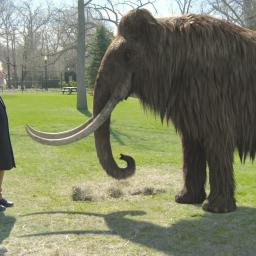
Get ready for Pleistocene Park
South Korea's Sooam Biotech Research Foundation (which has been cloning dogs for years) is partnering with Russian researchers
to clone a woolly mammoth, if only they can find suitable cells.
Russian and South Korean scientists who recovered a well-preserved frozen woolly mammoth from Siberia's permafrost last year raised hopes that researchers could find an intact cell nucleus that contained the full set of DNA instructions for making a mammoth. If that could be done, the nucleus could be inserted into an elephant egg, sparked into cell division, and then implanted into a surrogate mother elephant. The result? A clone that should be virtually identical to the long-dead mammoth.
Carbon dating of the mammoth's flesh determined that she lived about 40,000 years ago. (Earlier estimates suggested the remains were just 10,000 years old.) Growth rings in the tusk suggested she was in her late 50s when she died.

Around 800,000 years ago, magnetic north hovered over Antarctica and the geographic north pole was magnetic south. The poles have flipped several times throughout Earth's history. Scientists have estimated that a flip cycle starts with the magnetic field weakening over the span of a few thousand years, then the poles flip and the field springs back up to full strength again. However, a new study shows that the last time the Earth's poles flipped,
it only took 100 years for the reversal to happen.
The Earth's magnetic field is in a weakening stage right now. Data collected this summer by a European Space Agency (ESA) satellite suggests the field is weakening 10 times faster than scientists originally thought. They predicted a flip could come within the next couple thousand years. It turns out that might be a very liberal estimate, scientists now say.
A weakening magnetic field could interrupt power grids and radio communication, and douse the planet in unusually high levels of radiation. While a pole flip could cause a few technical issues, there's no need to panic. Scientists have combed the geological timeline for any evidence of catastrophes that might be related to a magnetic flip; they haven't found any. No direct evidence of past catastrophes triggered by a magnetic flip.
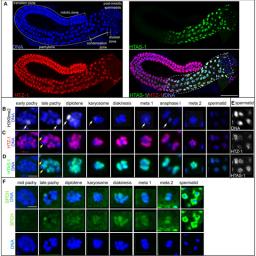
Following up on last week's
article about offspring and mothers' previous sexual partners (in insects, anyway), new research now sheds some additional light on the multi-layered process of how a sperm and egg pass along information needed for successful reproduction.
As described in an article published in the journal PLOS Genetics:
Though one layer is the DNA code that is transferred, the new study identifies information not encoded by DNA, a so-called "epigenetic" layer of information that helps the cell interpret the genetic code.
In insects this additional "epigenetic" layer of information apparently can come from a previous mate. The question if such or similar mechanisms can also exist in higher organisms, e.g. also in humans, might be far fetched, but not that far, that it precludes a more thorough research. Clearly, there are still plenty of unknown factors in human and non-human reproduction: an area ripe for further research.
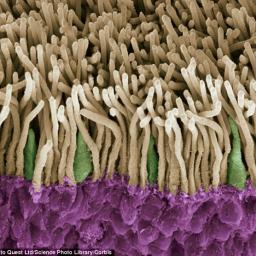
The same genetic mutation that makes people color-blind, can allow a small portion of women to
perceive 100 times as many shades of colors as the rest of us, up to a potential 99 million. The mutations, when found on both X-chromosomes, can cause development of a 4th cone cell in a photosensitive layer in the back of the eye that responds to specific wavelengths of light. This increased visual acuity has been found most substantial in mid to long-wavelength, or "reddish", spectral components.
Lots of animals are tetrachromats, including birds, fish, amphibians, reptiles and insects, but only a handful of human tetrachromats have been identified since 2012. This increased visual ability does come with a disadvantage of offspring having a high likelihood of color-blindness. Continued research may help scientists find a way to improve the vision of the (much larger) portion of the population that suffers from color-blindness.
More information on scientific studies of human tetrachromacy can be
found here.
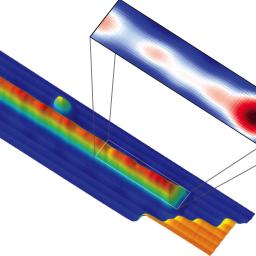
Since the 1930s scientists have been searching for particles that are simultaneously matter and antimatter.
Now physicists have found strong evidence for one such entity inside a superconducting material. The discovery could represent the first so-called "Majorana particle," and may help researchers encode information for quantum computers.
As opposed to particles found in a vacuum, unattached to other matter, these Majoranas are what's called "emergent particles." They emerge from the collective properties of the surrounding matter and could not exist outside the superconductor. The discovery could have implications for searches for free Majorana particles outside of superconducting materials. Many physicists suspect neutrinos-very lightweight particles with the strange ability to alter their identities, or flavors-are Majorana particles, and experiments are ongoing to investigate whether this is the case. Now that we know Majorana particles can exist inside superconductors, it might not be surprising to find them in nature.
Feels Like Earthquake Weather...
Hurricane Irene, a powerful storm that ran north along the US East Coast four days after a magnitude-5.8 earthquake rattled Virginia in 2011, may have triggered some of that earthquake's aftershocks. The rate of aftershocks following the 23 August 2011, earthquake near Mineral, Virginia, increased sharply as Irene passed by.
The researchers are not the first to examine a potential link between hurricanes and seismic activity. Shimon Wdowinski, a seismologist at the University of Miami, Florida, says that he has found a strong correlation between extremely wet tropical cyclones striking Taiwan and big earthquakes that occur up to three years later. He thinks that the erosion of landslide debris in such a storm's aftermath triggers a change in fault loading, eventually producing an earthquake.
That work is not yet published. But another study by researchers in the United States and Taiwan found a similar association between slow earthquakes - which take places over hours or even days - and tropical cyclones in Taiwan.
http://www.nature.com/news/hurricane-may-have-triggered-earthquake-aftershocks-1.12839The physical traits of previous sexual partners could be passed on to future children. Telegony was first hypothesized by Aristotle and was a widely held belief in the Middle Ages and up until the 19th century. The theory was discredited by the advent of genetics, but may have some truth to it after all. Scientists at the University of New South Wales discovered that, for fruit flies at least, the size of the young was determined by the size of the first male the mother mated with, rather than the second male that sired the offspring.
"We know that features that run in families are not just influenced by the genes that are passed down from parents to their children. Various non-genetic inheritance mechanisms make it possible for environmental factors to influence characteristics of a child. Our new findings take this to a whole new level - showing a male can also transmit some of his acquired features to offspring sired by other males," says lead author Dr Angela Crean.
http://www.telegraph.co.uk/science/science-news/11133203/Could-previous-lovers-influence-appearance-of-future-children.html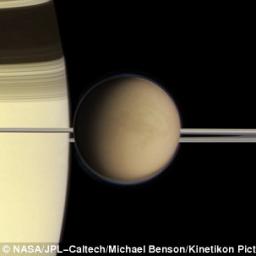
Astronomers have been left baffled by the rise and subsequent fall of a huge feature in a sea on Saturn's moon Titan. In July 2012 a giant feature 100 square miles (260 square kilometers) in area - roughly the area of 58,000 football fields - is seen surfacing from under the liquid before partially disappearing again. No definitive explanation is yet apparent. Several theories currently exist including surface waves, rising bubbles, floating solids, solids suspended just below the surface or 'something more exotic' according to NASA.
The mysterious feature appears bright in the radar images, suggesting it has a somewhat similar composition to the land nearby in the image. This supports one theory that it may be a solid structure - potentially an island - that surfaced from under the liquid before sinking again for an unknown reason.
http://www.dailymail.co.uk/sciencetech/article-2774811/Mystery-moving-island-Titan-Giant-object-58-THOUSAND-football-fields-size-rises-sinks-Saturn-s-moon.html
PostgreSQL, the much-loved opensource relational database, is
ramping up its nosql game with a new developer kit that gives access to NoSQL features that beat MongoDB in benchmarks.
The PostgreSQL Project, which EnterpriseDB supports, added NoSQL-style JSON processing features back in 2012. Now, the company is encouraging further work around that feature set by providing a developer kit to make it easier for programmers to leverage PostgreSQL's JSON functions and build applications around them. ... The PGXDK (Postgres Extended Datatype Developer Kit) is designed to allow developers "to use Postgres for the kinds of applications that until recently required a specialized NoSQL-only solution," as EnterpriseDB describes it. A sample application is also included to make it easier for developers to get a leg up on working with the product. The whole package will be made available through AWS as a machine image (PostgreSQL has long been a staple Amazon offering).
Vibhar Kumar has published a set of benchmarks here that show PostgreSQL eating MongoDB's lunch when measured in use of diskspace, bulk loading, and INSERTs.






